Complete Guide to Craters of the Moon National Monument and Preserve in Idaho, including things to do, hiking, history, nearby lodging and camping, directions, and so much more.
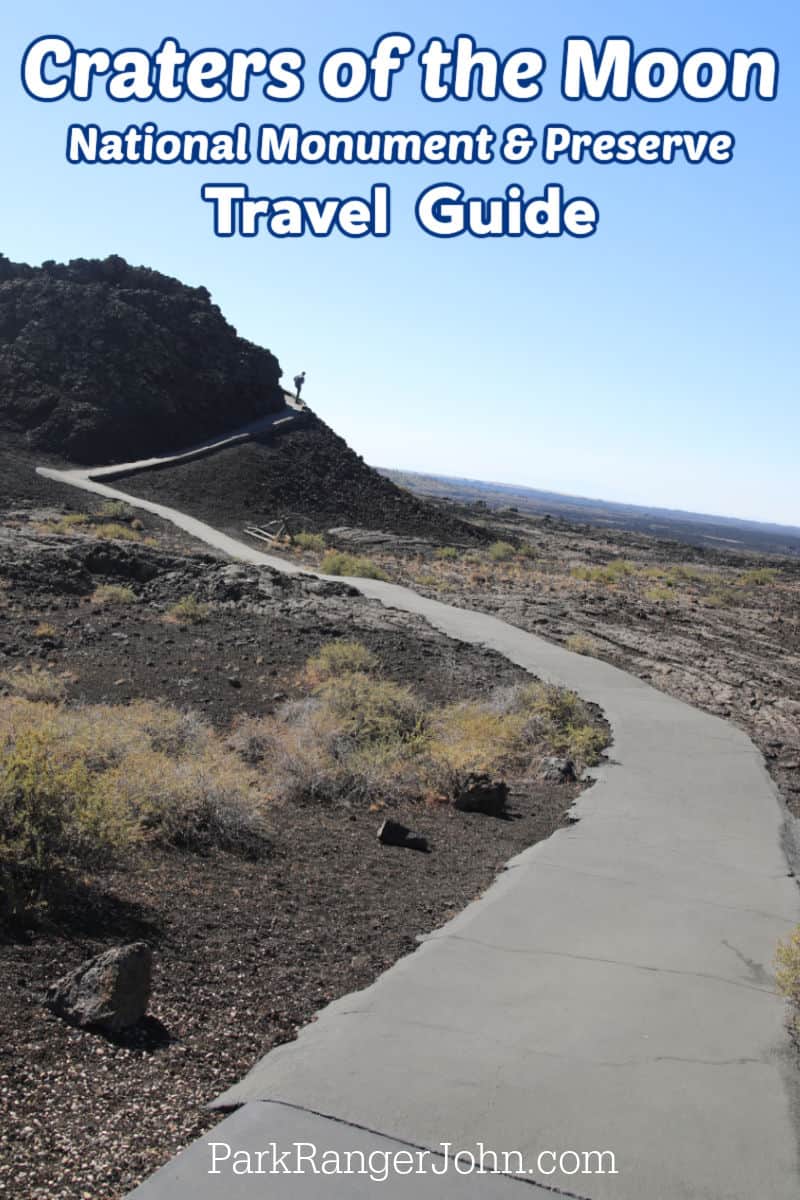
Craters of the Moon National Monument and Preserve
Visiting Craters Of The Moon National Monument and Preserve is like taking a step onto another planet!
For good reason, too. 15,000-2,000 years ago, Lava started erupting from the Great Rift, which starts by the park's Visitor Center and extends over 50 miles to the Southwest, covering over 600 square miles, creating a surface more like something you would expect to see on the moon.
TL;DR Don’t have time to read the full article? Here are my top finds:
🏨Hotels and Vacation Rentals
📍Tours
🐻 Save time! Buy your National Park Pass before your trip
Craters of the Moon National Monument Entrance Fee
Park entrance fees are separate from camping and lodging fees.
Park Entrance Pass - $20.00 Per private vehicle (valid for 1-7 days from the date of purchase)
Park Entrance Pass - Motorcycle - $15.00 Per motorcycle (valid for 1-7 days from the date of purchase)
Per-Person Entrance Pass - $10.00 Visitors 16 years or older who enter on foot, bicycle, or as part of an organized group not involved in a commercial tour.
Annual Park Entrance Pass - $35.00, Admits pass holder and all passengers in a non-commercial vehicle. Valid for one year from the month of purchase.
$0.00 for Education/Academic Group
$25.00 for Commercial Sedan with 1-6 seats and non-commercial groups (16+ persons)
$40.00 for Commercial Van with 7-15 seats
$100.00 for Commercial Motor Coach with 26+ seats
Learn more about National Park Passes for parks that have an entrance fee.
$80.00 - For the America the Beautiful/National Park Pass. The pass covers entrance fees to all US National Park Sites and over 2,000 Federal Recreation Fee Sites for an entire year and covers everyone in the car for per-vehicle sites and up to 4 adults for per-person sites.

Buy your pass at this link, and REI will donate 10% of pass proceeds to the National Forest Foundation, National Park Foundation, and the U.S. Endowment for Forestry & Communities.
National Park Free Entrance Days -Mark your calendars with the free entrance days the National Park Service offers for US citizens and residents.
It is known for its spatter cones, some of the rarest volcanic features on Earth!
The scenery is covered with lava that can reach over 150 degrees Fahrenheit on a hot summer day and can be completely covered in snow in the winter.
It's truly a remarkable place to explore! Here is my list of things to do: Craters Of The Moon National Monument and Preserve.
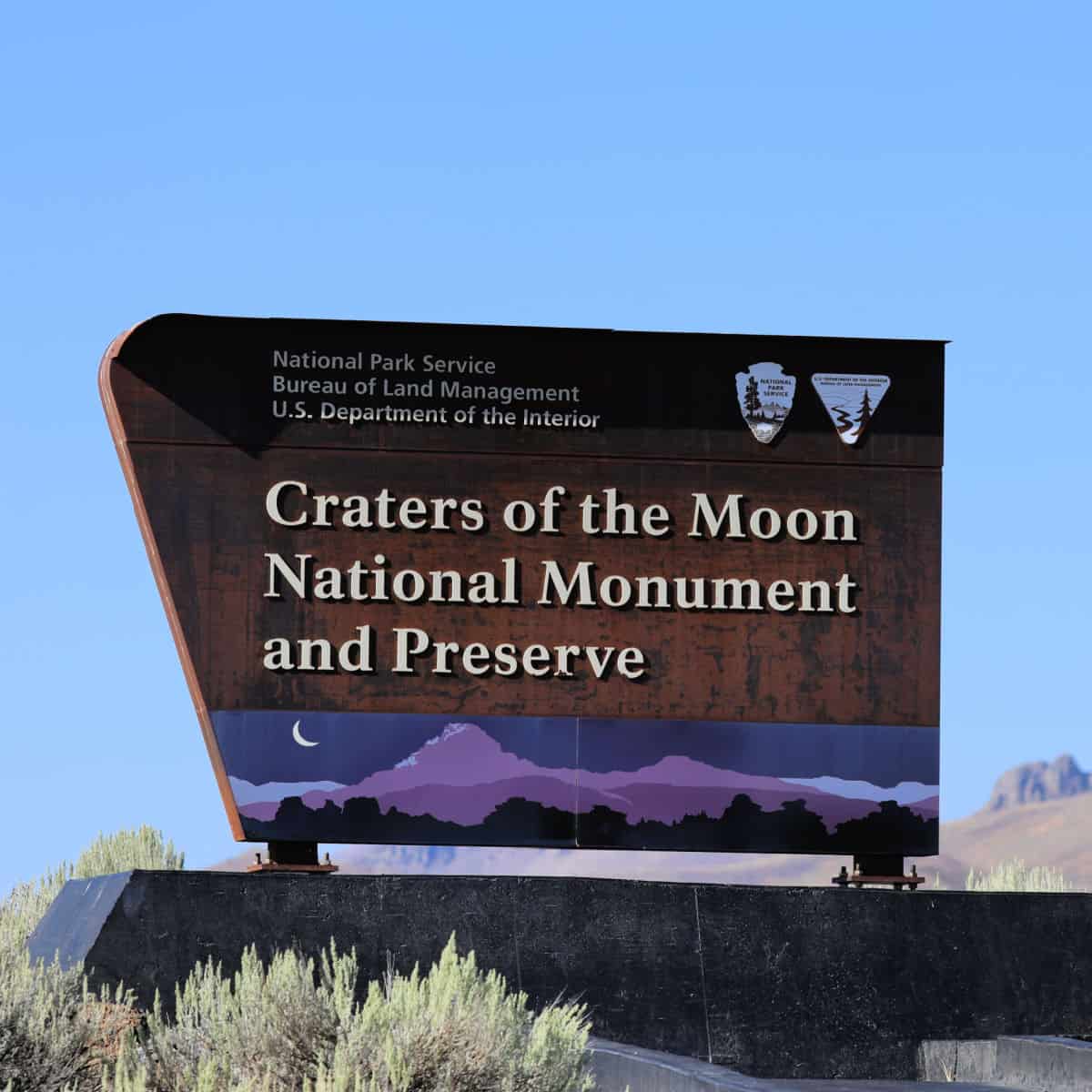
Is Craters of the Moon worth visiting?
Yes! This park is very remote and fascinating! I loved the Inferno Cone Trail and seeing the spatter cones. It is also a great example of lava fissures, not your typical mound-shaped volcano (like Mount Rainier or Mount Saint Helens) that most people think of.
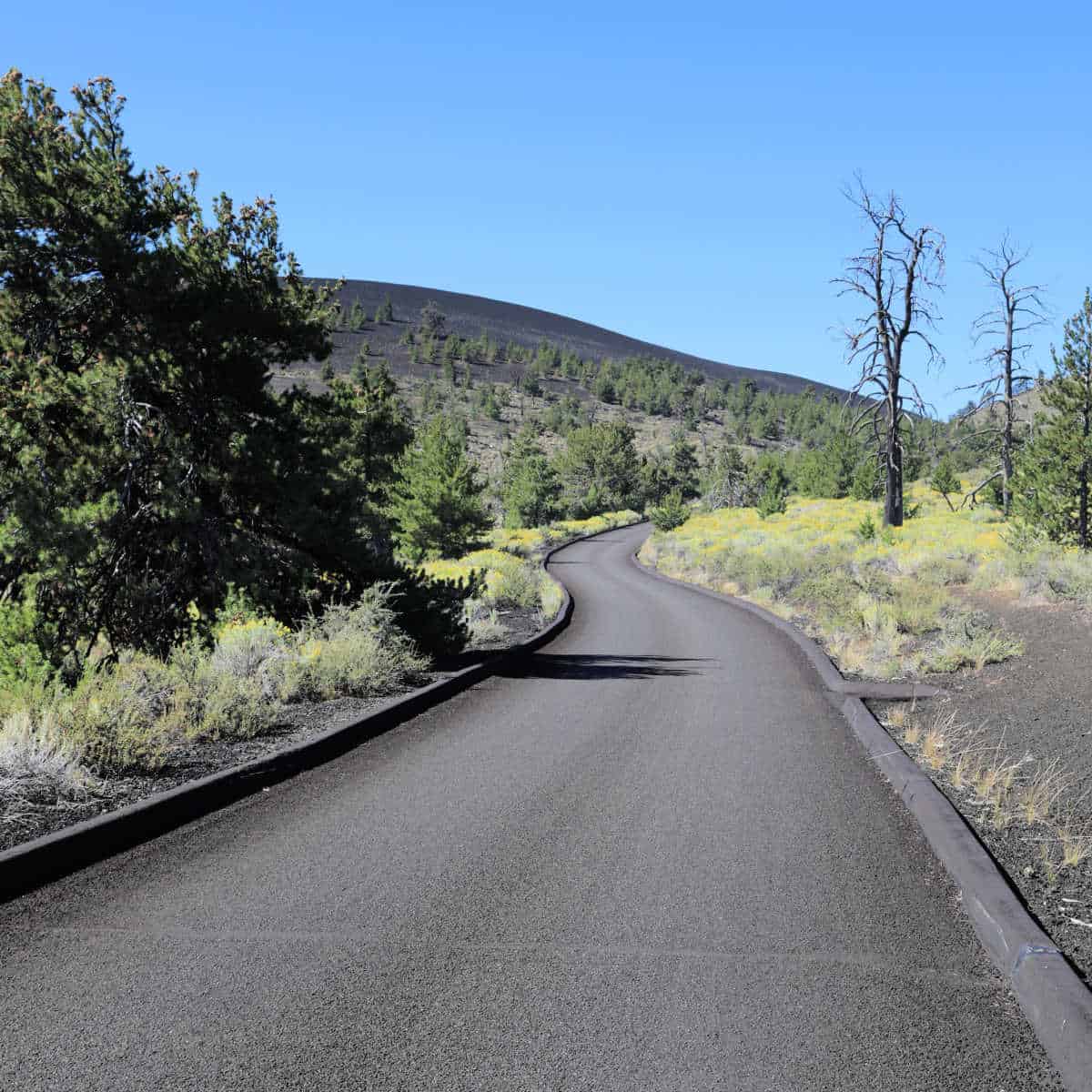
History of Craters of the Moon
Craters of the Moon National Monument and Preserve protect three lava fields situated within the Snake River Plain.
The lava fields were created by fissures or cracks in the surface of the Earth, known as the Great Rift, which occurred over 15,000 years ago.
Despite the area resembling the craters on the moon, the area has a long and rich human history.
In addition to the magnificent lava fields, this peculiar landscape contains a section of the Oregon Trail known as Goodale's Cutoff.
The First Inhabitants
Humans have inhabited the Snake River Plain for roughly 12,000 years, although the early Paleo-Indians did not leave much evidence behind.
The archeological record indicates that the first people to leave their mark on the lava fields were the Shoshone and Bannock tribes who inhabited the Snake River Plain.
The two tribes coexisted in the Snake River Plain.
They were hunter-gatherers who lived a semi-nomadic lifestyle in small bands that moved seasonally to take advantage of the resources available in different areas of the Snake River Plain.
The archeological record shows that the tribes spent considerable time in the lava fields.
The Craters of the Moon National Monument and Preserve is home to several edible plants and those used for medicinal purposes by the Shoshone and Bannock tribes.
It is believed the Shoshone and Bannock tribes witnessed the lava eruptions of the Great Rift.
The tribe's experience during this time has been remembered and passed down as a myth.
The Serpent Legend tells of a great serpent coiling itself around a mountain until it cracked.
Out of the crack came fire and liquid rock in the area that is now known as Craters of the Moon.
The tribes who made rock shelters in the lava fields adapted to their environment.
Any meat caught by hunting on one of the game trails that ran through Craters of the Moon National Monument and Preserve would be stored in lava tubes that were frozen year-round.
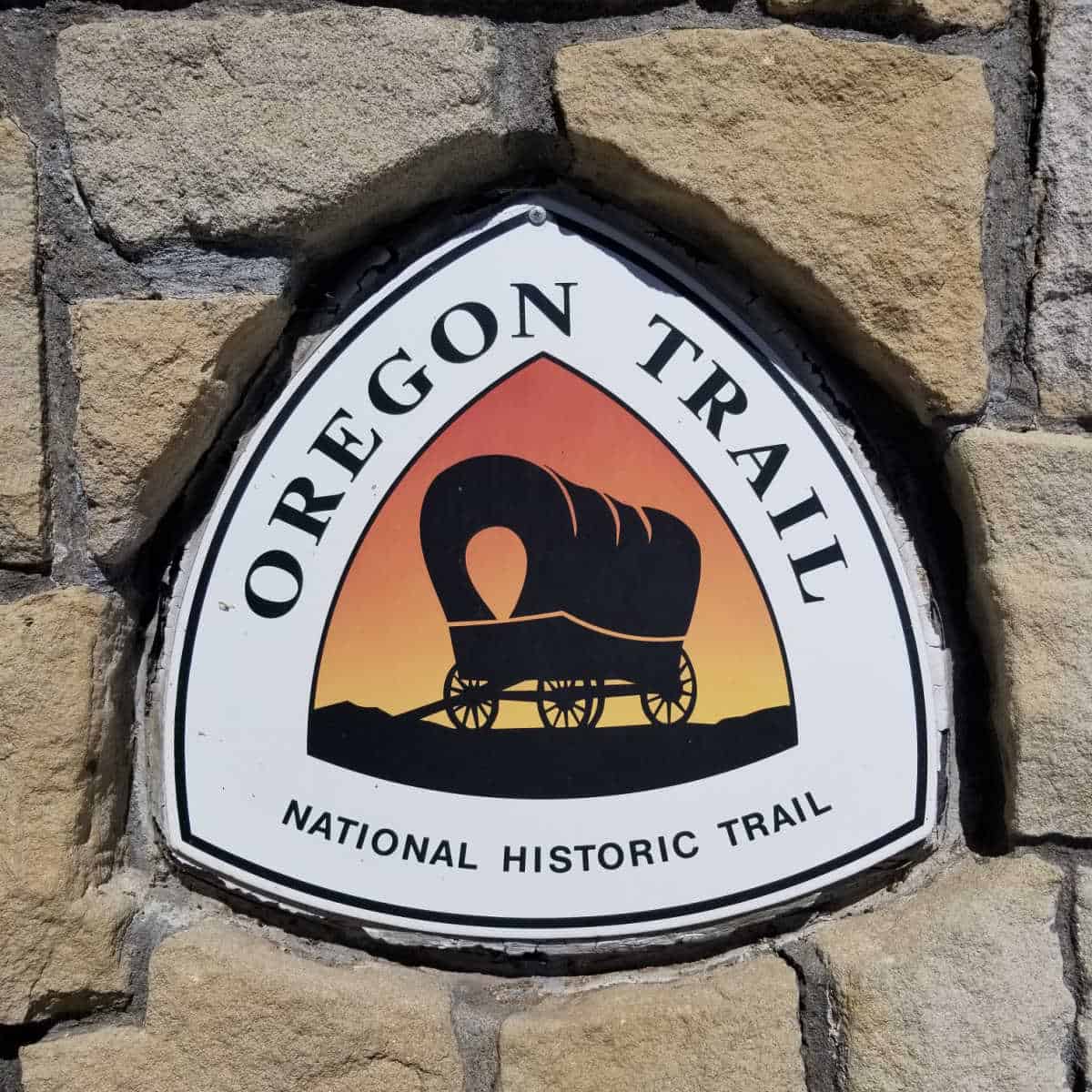
The Oregon Trail in Craters of The Moon
The Craters of the Moon National Monument and Preserve houses a portion of the Oregon Trail.
A portion of the Oregon Trail followed the Snake River.
The Oregon Trail was a significant overland route that was used by hundreds of thousands of people during the mid-19th century to travel from Missouri to Oregon City, Oregon.
The trail was over 2,000 miles long and stretched through various terrains, including plains, mountains, and valleys.
Originally used by missionaries, the trail became a popular route for emigrants seeking new opportunities in the West by the 1840s.
The journey on the Oregon Trail was arduous and dangerous.
The emigrants had to deal with harsh weather conditions, difficult terrain, and the constant threat of disease, starvation, and attack by Native American tribes.
They traveled in covered wagons pulled by oxen or horses and had to carry with them all the supplies and equipment they would need for the long journey.
Goodale's Cutoff
Several alternative routes were etched out by enterprising individuals along the trail.
One such spur trail was Goodale's Cutoff, which followed old trails previously used by the Shoshone and Bannock tribes.
The cutoff was first used by emigrants in 1862, as a large group was seeking a safer alternative to the route.
The group asked Tim Goodale, a guide, to lead them from Fort Hall to Boise.
The section of the Oregon Trail that passed through the Snake River Plain had become increasingly dangerous due to hostilities between the local tribes and the emigrants.
Goodale succeeded, leading over 1000 people, 338 wagons, and over 2,000 heads of cattle along the route that would become known as Goodale's Cutoff.
The trail skirted the lava fields and passed through the northern section of the Craters of the Moon National Monument and Preserve.
Traveling along Goodale's Cutoff took roughly three weeks due to the groups' slow travel as they made their way around and over the rugged terrain.
The route became one of the most popular spurs, with seven out of ten groups choosing to follow it.
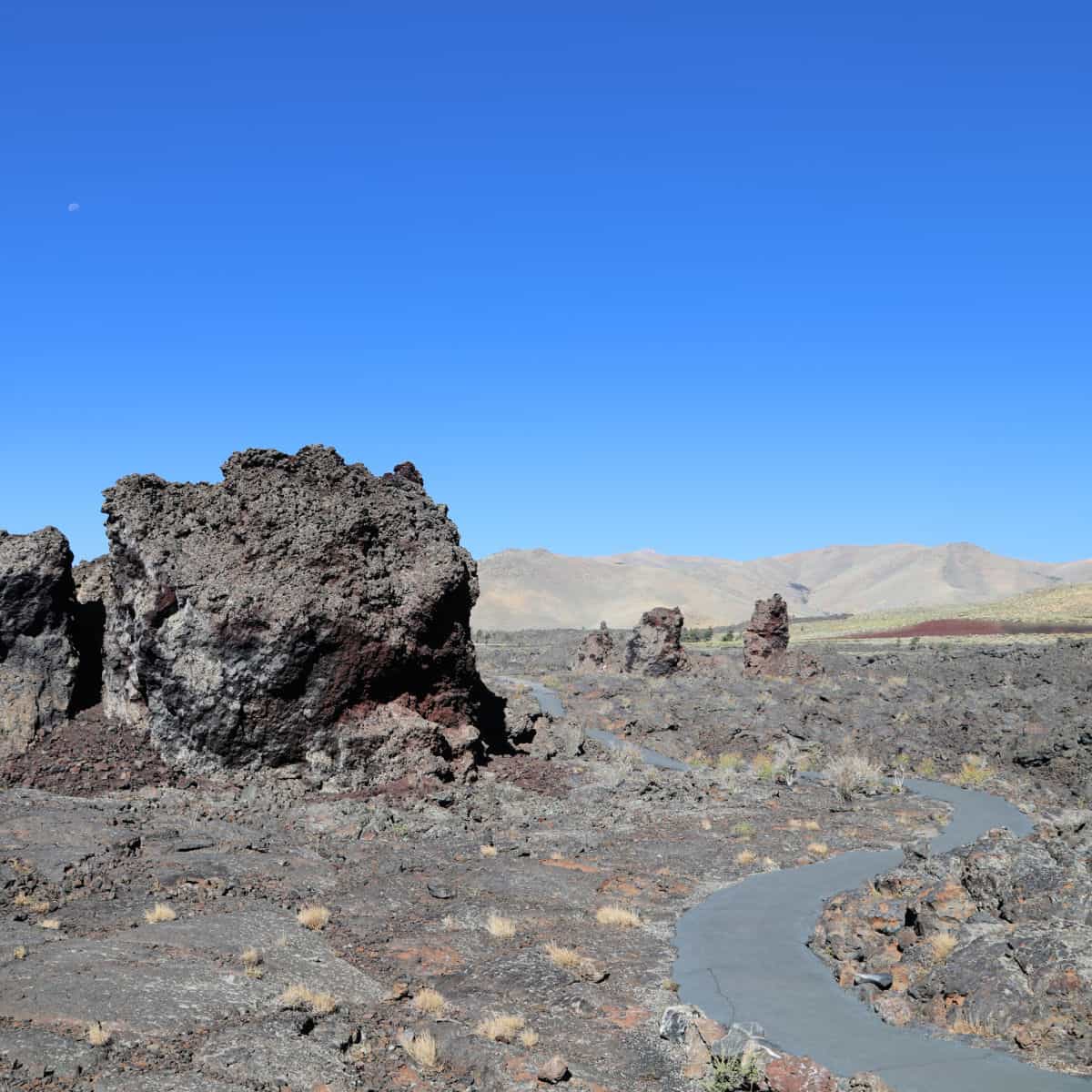
Explorers and the Craters of the Moon Lava Fields
European Americans first explored the lava fields in 1879.
The first explorers wanted to see if the land was suitable for keeping cattle. The lava fields proved to be unsuitable, and the explorers left.
Other explorers who visited the region saw nothing but a wasteland.
Geologists, however, found the region extremely interesting.
The lava fields got their name from settlers, not geologists, who visited the area in the early 1900s.
Robert Limberts Expedition
The first explorer to see the lava fields as anything other than a desolate wasteland was Robert Limbert. In 1920, Limbert and W.L. Cole trekked across the lava fields.
During their 17-day trek, Limbert named many of the fields' natural features and photographed the landscape.
In 1921, Limbert returned with a group of scientists and civic leaders to champion the protection of the unique landscape.
Limbert was adamant the lava fields needed to be protected, so he sent a scrapbook filled with images of the area and essays to President Calvin Coolidge in 1924.
Shortly after receiving Limbert's scrapbook, President Calvin Coolidge declared the Craters of the Moon a National Monument.
Astronauts at Craters of the Moon
In 1968, astronauts who were a part of the Apollo 14 mission to the moon were sent to the Craters of the Moon National Monument and Preserve.
The men, Eugene Cernan, Joe Engle, Alan Shepard, and Edgar Mitchell, were sent to explore the rugged terrain of the lava fields.
NASA felt that the astronauts should learn how to take samples of the volcanic rock in preparation for their mission to the moon.
Years later the men remarked how helpful their training at the National Monument was.
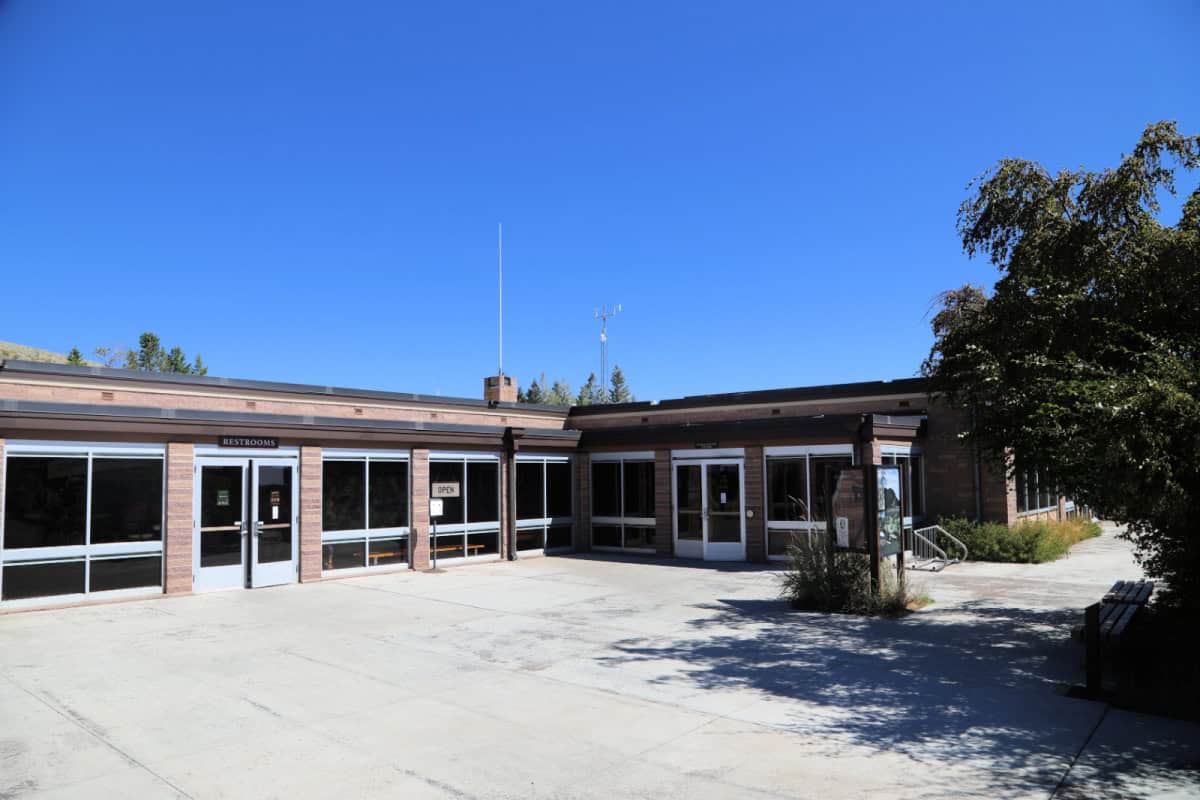
Time Zone
Mountain Time
Pets
Pets must remain on a leash no longer than six feet. Pets are not allowed on any trails or in the visitor center even if they are carried. Pets may walk on the road, in the campground, and in parking areas.
Cell Service
Limited cellular access is available for some providers at overlooks along the highway and Loop Drive.
Park Hours
Opens 24 hours a day, 7 days a week, except on Holidays
Wi-Fi
There is no public Wi-Fi available
Insect Repellent
Insect repellent is always a great idea when outdoors, especially if you are around any body of water.
We use Permethrin Spray on our clothes before our park trips.
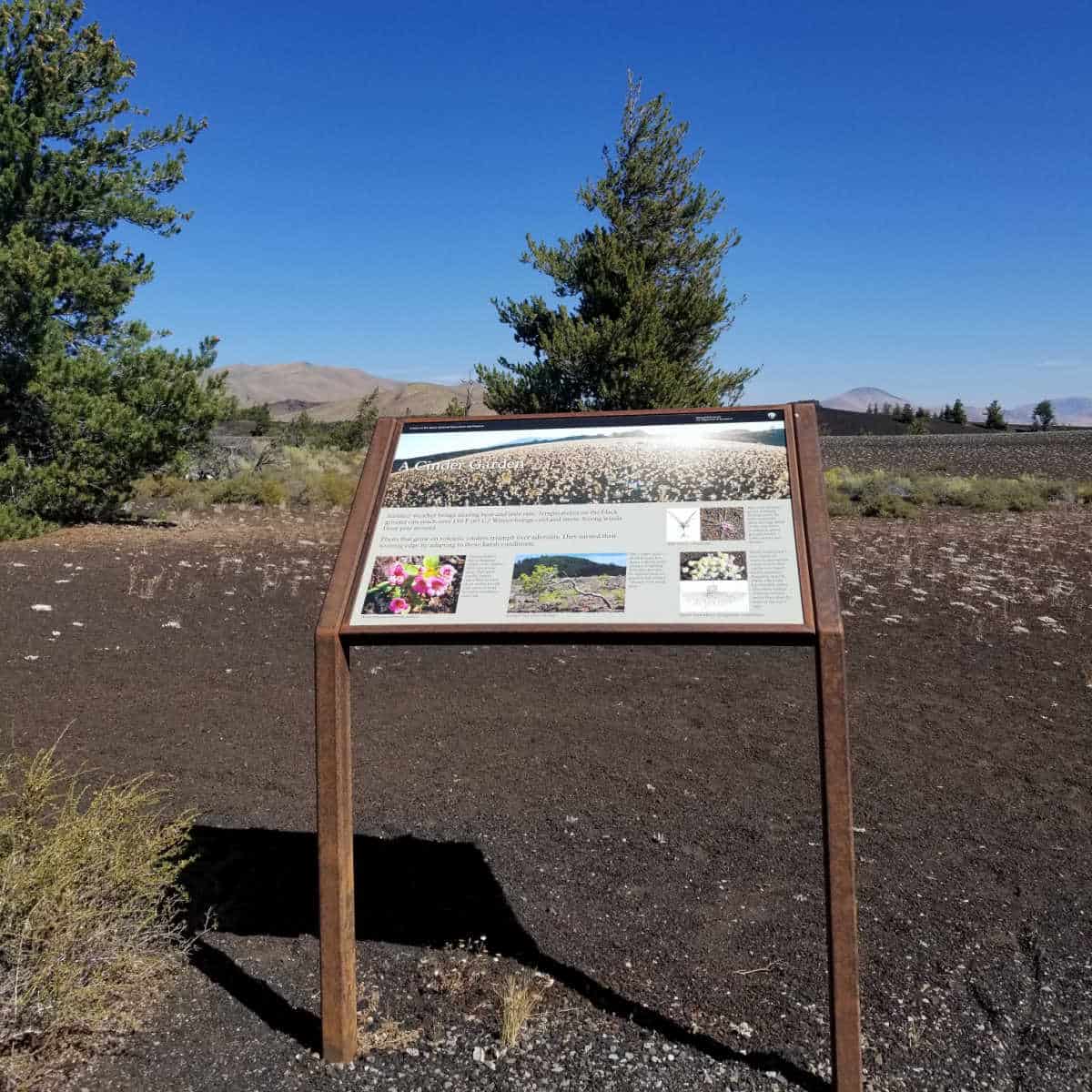
Water Bottle
Make sure to bring your own water bottle and plenty of water with you. Plastic water bottles are not sold in the park.
Parking
The road is fully paved, making it suitable for most vehicles, including RVs. Additionally, the park offers RV parking at the Robert Limbert Visitor Center, located on the east side of the center after passing the first parking area. This parking area provides a convenient and secure location for RV travelers to park and explore the park without worrying about finding a suitable parking spot or damaging their vehicle.
Food/Restaurants
There are no restaurants within the park aside from vending machines. The nearest restaurants are located in the town of Arco, 18 miles east of the visitor center on US Highway 20/26/93
Gas
There are no gas stations within Craters of the Moon. The nearest gas station is located in the town of Arco, which is approximately 18 miles away from the Craters of the Moon Visitor Center.
Drones
Drones are not permitted within National Park Sites.
National Park Passport Stamps
National Park Passport stamps can be found in the visitor center.
We like to use these circle stickers for park stamps so we don't have to bring our passport book with us on every trip.
The National Park Passport Book program is a great way to document all of the parks you have visitied.
You can get Passport Stickers and Annual Stamp Sets to help enhance your Passport Book.
Electric Vehicle Charging
There are no EV Charging Stations within the park. However, there are several nearby places where you can charge your electric vehicle such as Arco, Idaho Falls, and Twin Falls.
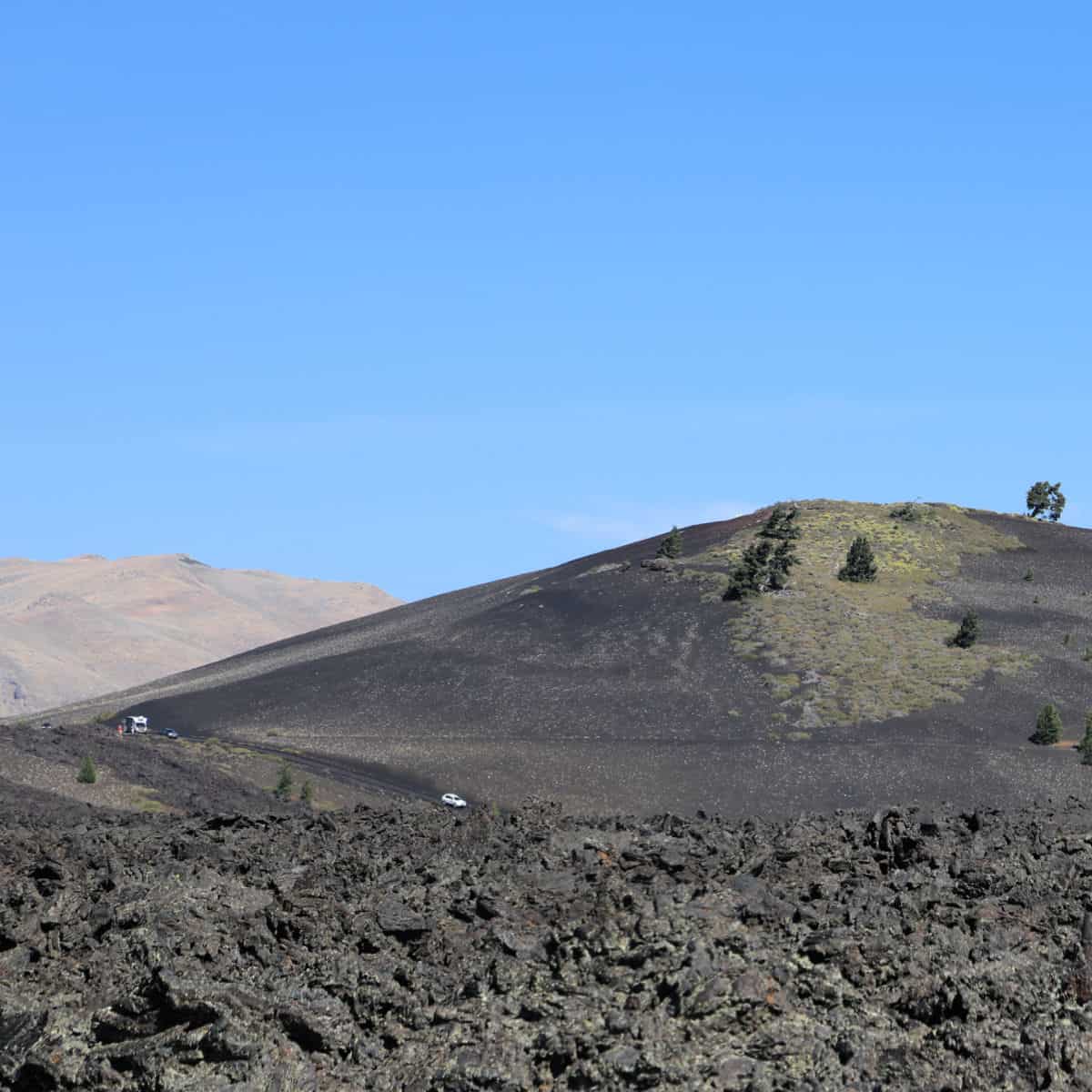
Details about Craters of the Moon
Size - 750,000 acres
Check out how the park compares to other National Parks by Size.
Date Established
May 2, 1924 by President Calvin Coolidge
National Park Address
1266 Craters Loop Road
Arco, ID 83213
National Park Map
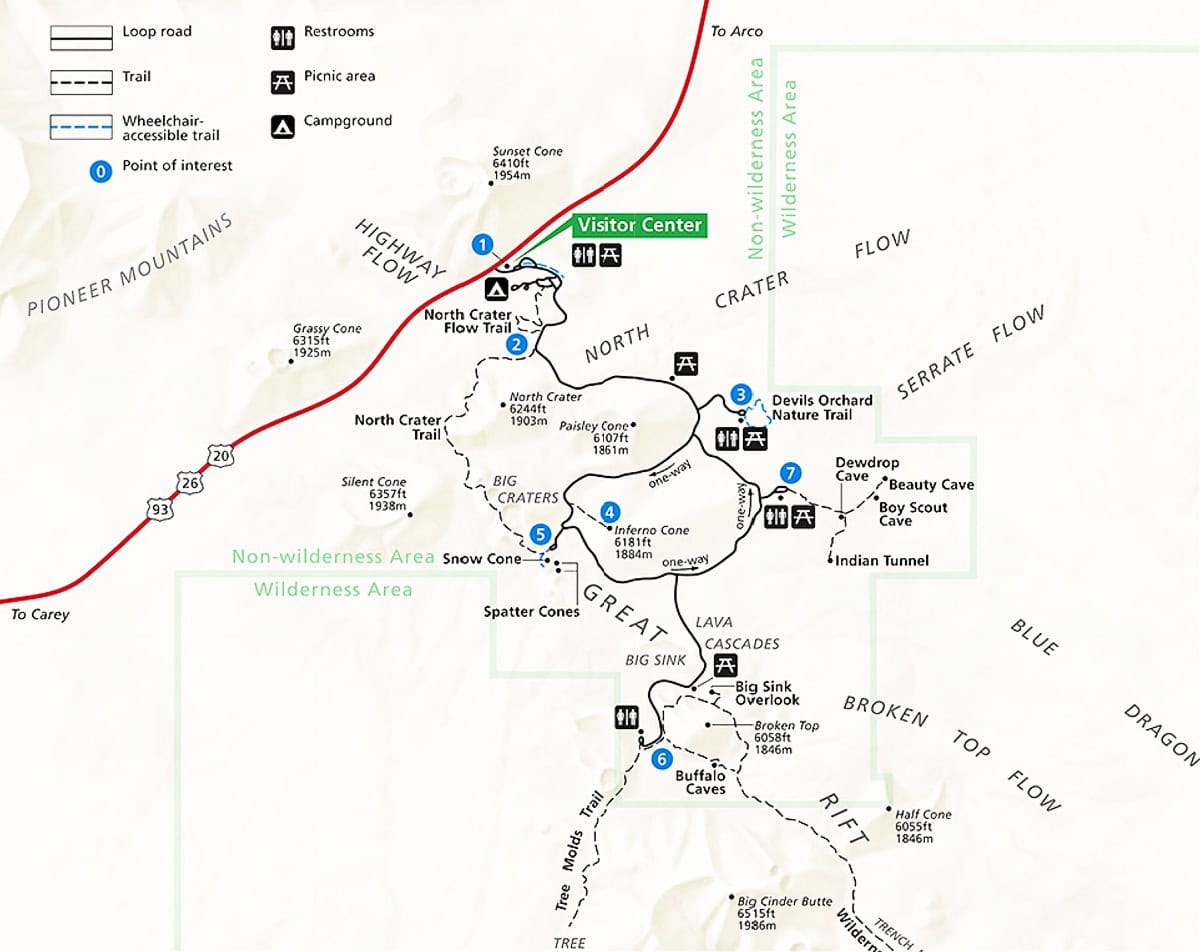
Where is Craters of the Moon National Monument and Preserve?
Craters of the Moon National Monument and Preserve is located in the Snake River Plain in central Idaho, United States.
Estimated distance from major cities nearby
Hailey, ID - 53 miles
Blackfoot, ID- 78 miles
Idaho Falls, ID- 86 miles
Chubbuck, ID- 98 miles
Ammon, ID- 92 miles
Pocatello, ID- 102 miles
Rupert, ID- 105 miles
Rexburg, ID- 106 miles
Burley, ID- 121 miles
Jerome, ID- 82 miles
Twin Falls, ID- 90 miles
Dillon, MT- 188 miles
Mountain Home, ID- 127 miles
Jackson, WY- 175 miles
Preston, ID- 167 miles
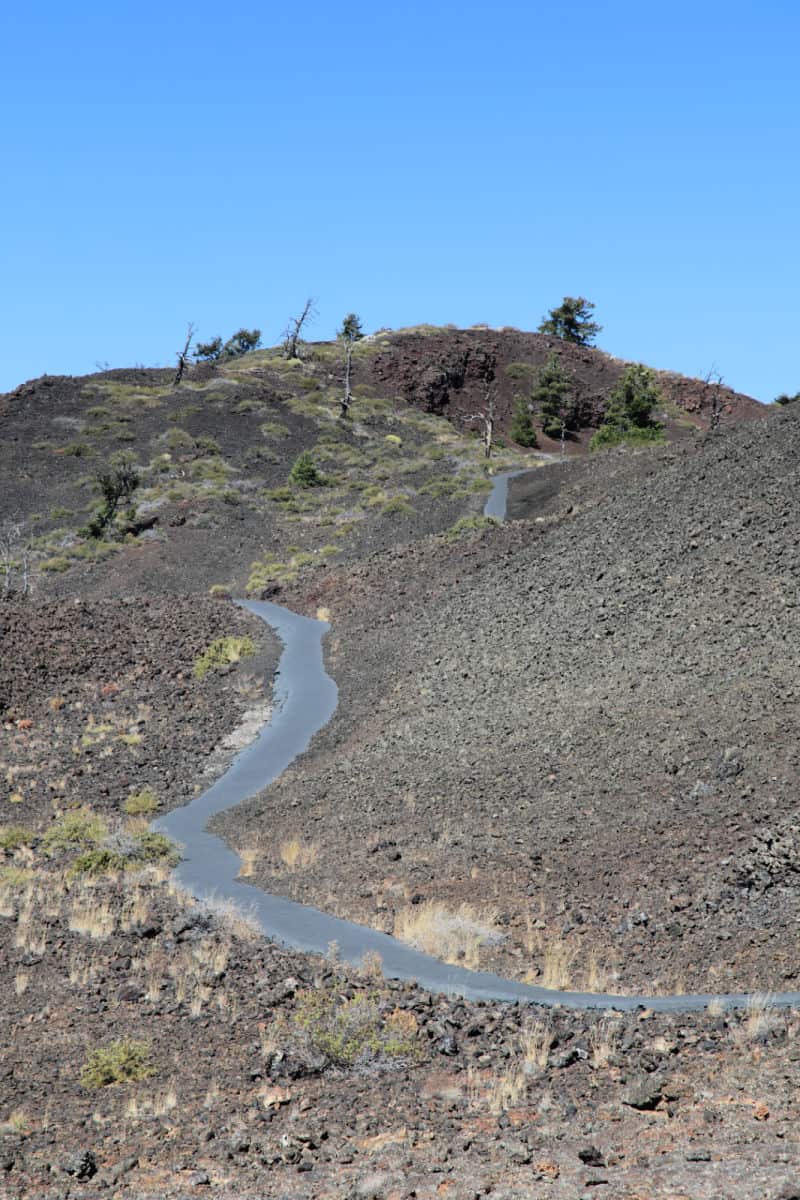
Estimated Distance from nearby National Park
Yellowstone National Park - 242 miles
Grand Teton National Park - 180 miles
Glacier National Park - 278 miles
Great Basin National Park - 403 miles
Getting to Craters of the Moon
Closest Airports
Idaho Falls Regional Airport - 86 miles
Pocatello Regional Airport - 105 miles
Magic Valley Regional Airport- 95 miles
International Airports
Salt Lake City International Airport
Regional Airports
Jackson Hole Airport - 185 miles
Boise Airport- 168 miles
Driving Directions
Craters of the Moon's visitor center and loop road are accessible via U.S. Highway 20/26/93.
The park entrance is located 24 miles northeast of Carey, Idaho, and 18 miles southwest of Arco, Idaho.
Look for signs on the highway to mark the park boundary and turn onto the park road.
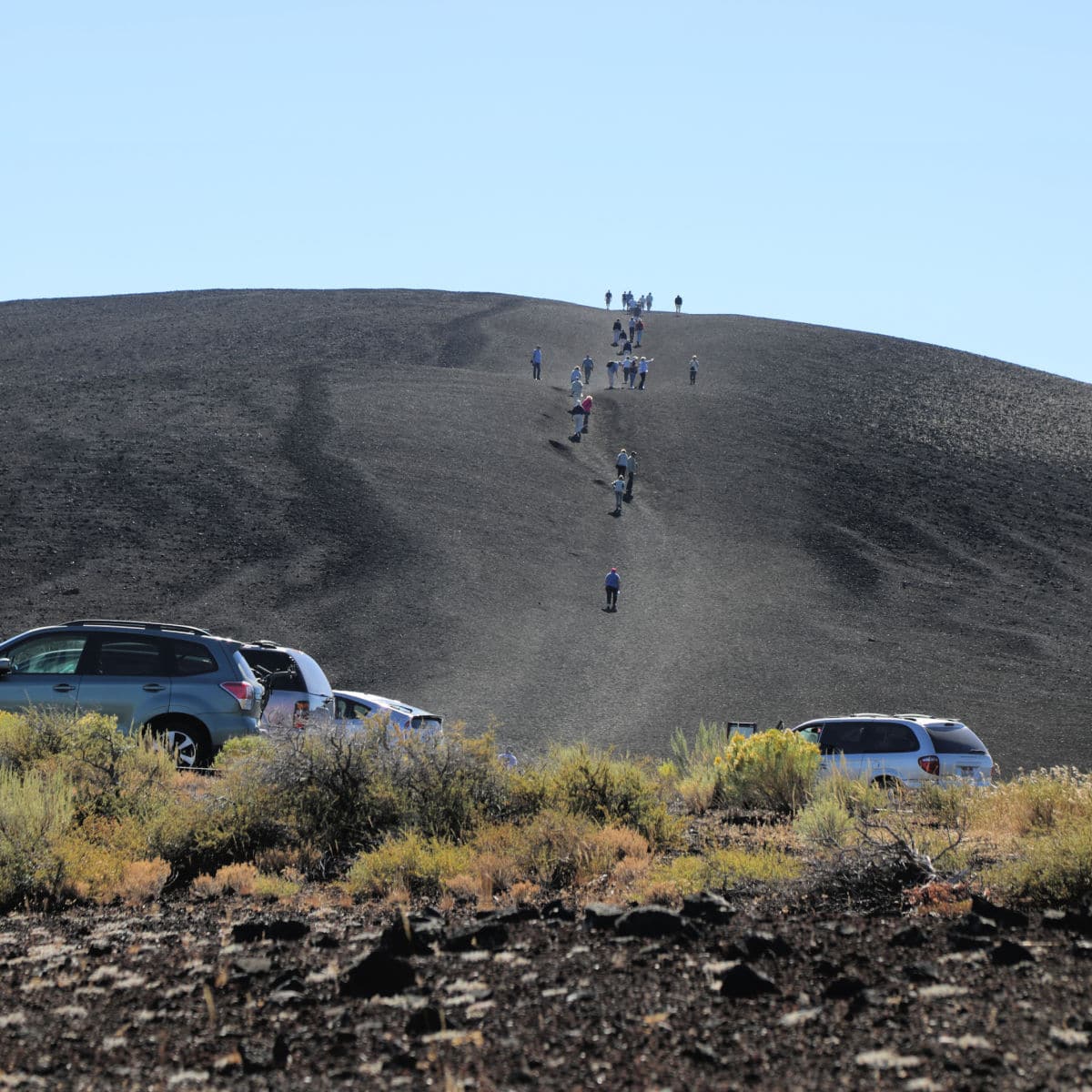
The best time to visit Craters of the Moon
The best time to visit Craters of the Moon National Monument and Preserve is between the months of April and October. During this time, the weather is warmer, and the roads are usually open.
The park can be quite busy during the summer months, but visitors can still enjoy hiking, camping, and exploring the volcanic landscape.
Spring and fall are great times to visit as the temperatures are mild, and there are fewer crowds.
However, it is important to note that the weather can be unpredictable and volatile, with winds and storms possible at any time of the year.
Visitors should also be aware that the park's caves may be closed during certain times of the year due to bat hibernation.
Ultimately, the best time to visit Craters of the Moon National Monument and Preserve will depend on your personal preferences and schedule.
Weather and Seasons
Summer
The summer season typically lasts from June to August at the Craters of the Moon National Monument and Preserve.
During this time, temperatures can vary between the high 70s to low 90s during the day and drop to the low 50s to 60s at night.
The park's high elevation also means that the air is generally colder and drier, making it a pleasant escape from the heat in other parts of the country.
Visitors during this time can expect clear and sunny skies during the day but should also prepare for sudden thunderstorms in the afternoons or evenings.
The park's unique volcanic landscape offers plenty of opportunities for outdoor activities such as hiking, camping, and stargazing.
It is important for visitors to bring plenty of water, sunscreen, and appropriate clothing and gear for exploring the park's harsh and rugged terrain.
Fall
The fall season at Craters of the Moon National Monument and Preserve usually lasts from late September to November.
During this time, the temperatures gradually drop from the high 60s or low 70s in September to the low 40s or high 30s in November.
The park experiences mild to cold temperatures during the fall season, with occasional snowfall in late October and November.
Visitors can expect to experience a quieter and more peaceful environment during the fall season as the crowds thin out.
The fall season also offers a unique opportunity to witness the changing colors of the leaves and the vibrant hues of the park’s volcanic terrain.
The sunsets during this season are particularly stunning, painting the sky with a palette of oranges, reds, and pinks.
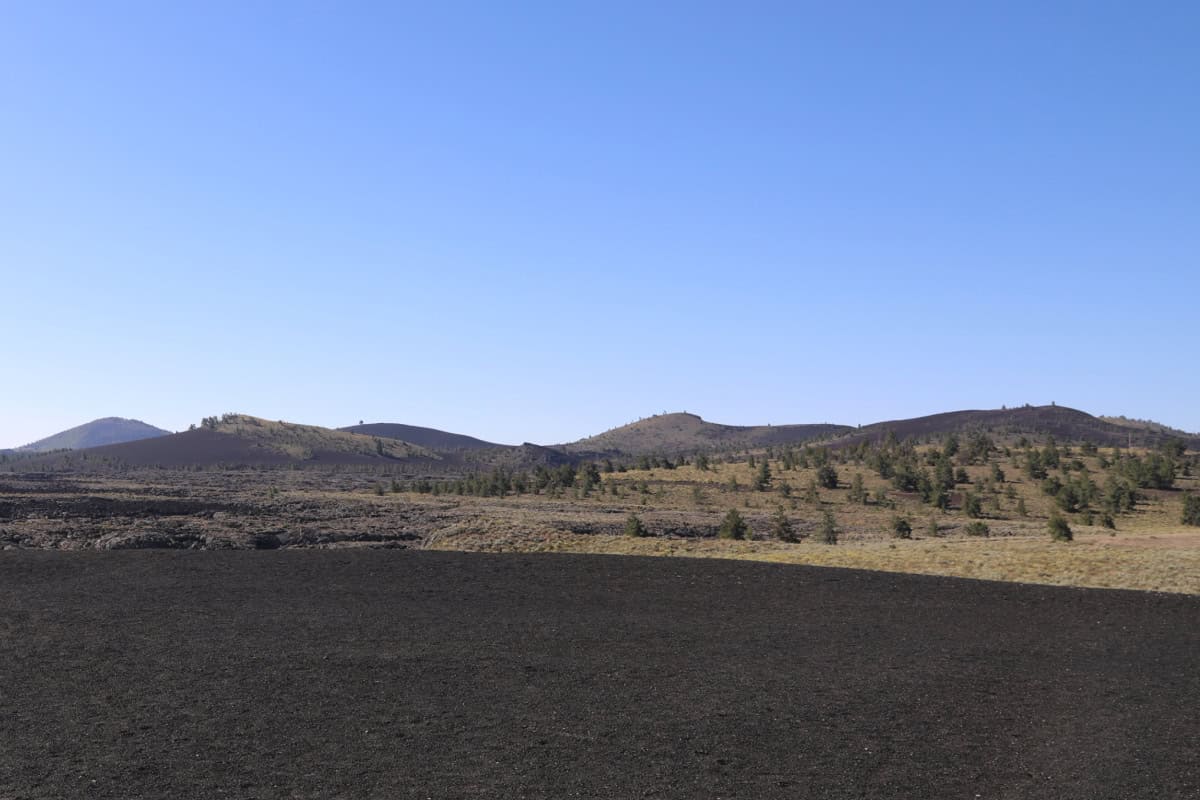
Spring
The spring season at Craters of the Moon National Monument and Preserve falls between March and May.
During these months, temperatures vary between 32 to 60 degrees, depending on the specific location of the park.
Springtime is generally mild and pleasant, with limited rainfall and some windy days.
The landscape is characterized by melting snow, blooming wildflowers, and greenery.
During this time, visitors can enjoy several outdoor activities, such as hiking, camping, wildlife viewing, and stargazing.
It is important to note, though, that some trails and roads may be closed due to lingering winter conditions or muddy terrain.
Winter
The winter season in Craters of the Moon National Monument and Preserve typically lasts from December to February.
During these months, temperatures vary from cold to extremely cold, with an average daytime temperature ranging from 15 to 30 degrees and nighttime temperatures falling below zero.
Visitors should be prepared for the weather conditions, which are characterized by frequent snowfalls and occasional blizzards.
Despite the cold weather, the winter landscape in Craters of the Moon is a scenic wonderland of snow.
Visitors can enjoy popular winter recreational activities such as cross-country skiing, snowshoeing, and winter hikes.
However, most of the park facilities are closed during this time of year.
To ensure a fun and safe visit, visitors should prepare with warm clothing, appropriate footwear, and sufficient food and water.
Although the park offers a unique winter experience, it is crucial to come fully prepared. So bundle up and enjoy the beauty that Craters of the Moon has to offer in the wintertime!
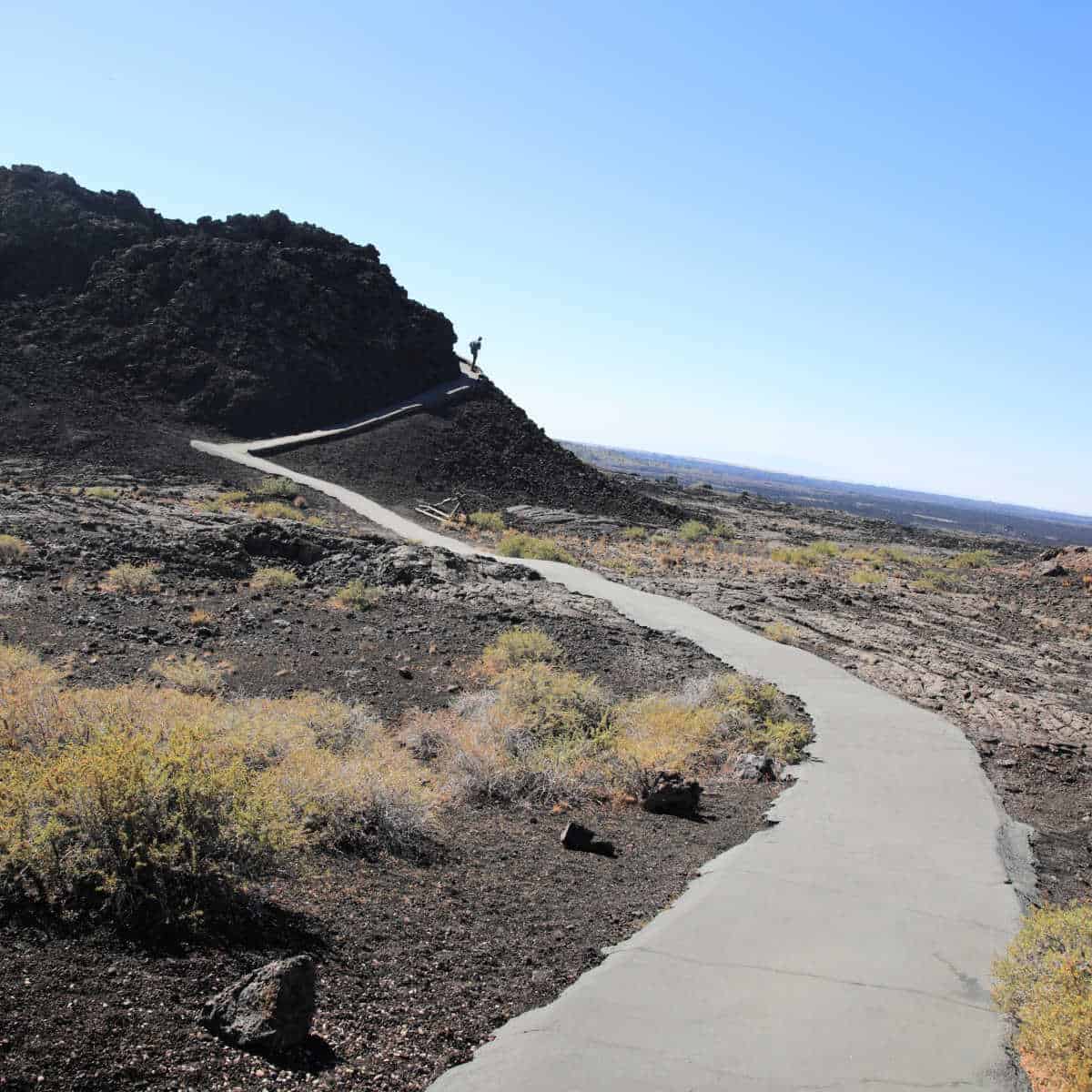
Best Things to do in Craters of the Moon National Monument
Craters Of The Moon Visitor Center
The park visitor center is on your left as you enter the park. It's a great place to gather maps and park brochures, find out when interpretative programs will be held, see interpretative displays, and watch the park movie.
The Park Visitor Center is also where you can obtain your free Cave Permit. A permit is required to visit any of the park's five caves.
I recommend that you get one because you will likely arrive at the trailhead and wish you had one.
Become a Lunar Ranger
Craters of The Moon National Monument and Preserve does things a little differently than the typical Junior Ranger Program.
Craters of the Moon is the only place in the universe where you can become a Lunar Ranger! You may ask, why a Lunar Ranger?
First off, this park is named Craters of the Moon because it looks like you are actually looking at the surface of the moon while looking through a telescope!
Secondly, in 1969, Apollo Astronauts Alan Shepard, Eugene Cernan, Joe Engle, and Edgar Mitchel went to the Craters of the Moon to learn about geology on Earth before landing on the moon.
The badge is pretty darn cool, too! Where else can you get a badge with an astronaut and the moon on it?
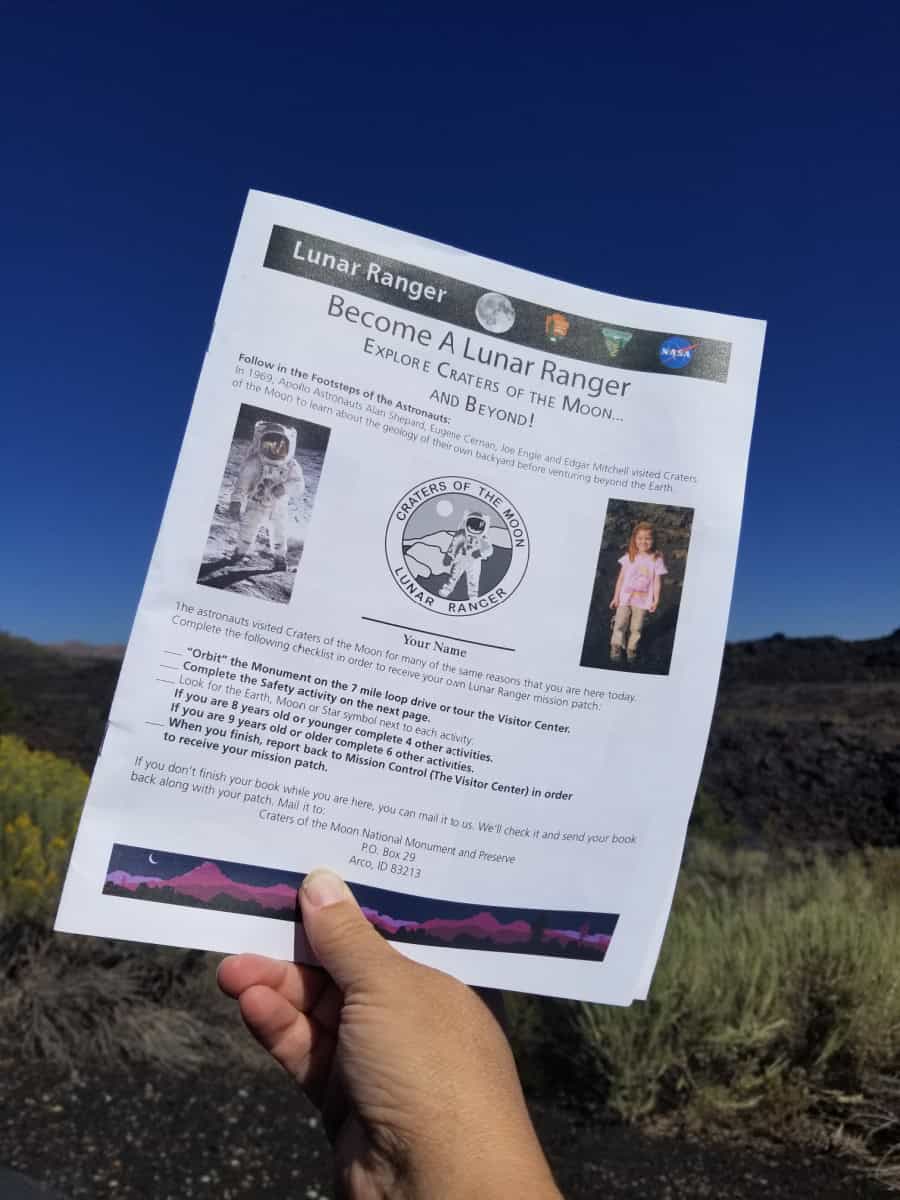
Drive the scenic 7-mile loop drive.
As you can tell from the photo above, this scenic drive is unlike many scenic drives you would expect to see in a national park.
There are very few trees or any plant life for that matter, you are not going to see beautiful lakes or waterfalls flowing. What you are going to see is incredible geology!
That's right, all your rock geeks are going to freak out seeing spatter cones from the Great Rift, and this drive puts you in the middle of incredible views of these features.
Explore the dark skies.
Craters of the Moon National Monument was designated an International Dark Sky Park in 2017.
It seems logical, as it is the only park named after a celestial body.
The Idaho Falls Astronomical Society hosts a Star Party each spring and fall, so make sure to plan ahead if you would like to visit during this time.
I have worked with several Astronomical Societies in the past, hosting star parties, and they are a blast!
Members of the Astronomical Society will bring out their telescopes and invite people to look into them.
They have even invited people to bring their own telescopes, and they were willing to help visitors get acquainted with using their own equipment.
Craters of the Moon also offers Ranger-Led Full Moon Hikes, which take advantage of the moon's light in the evening.
Snowshoeing and Winter Recreation at Craters of the Moon National Monument
Did you know that Craters of the Moon is open during the winter? Not only is it open, but it is a fantastic place for winter recreation!
There is a one-mile snowshoe trail in the park (just follow the orange snow poles), or venture off and climb a cinder cone.
There is also a guided 2-mile snowshoe hike on Saturdays in January-February.
Make sure to call ahead to make reservations at (208)-527-1335 or email crmo_information@nps.gov.
No prior experience is required for this, but participants need to be at least 10 years of age for this moderately strenuous walk.
If Cross Country Skiing is more your thing, Craters of the Moon has you covered as well!
They have a 4-7 mile groomed trail (depending on weather) and are typically available between December to March.
The terrain is mostly flat with gentle hills, and it can take 2-4 hours to complete the loop.
Now that you have a list of things to do at Craters of the Moon National Monument and Preserve, it's up to you to explore this incredible park.
Hiking
Craters of the Moon has several great hikes! I really enjoyed every hike in this park, but my absolute favorite is the Inferno Cone Hike.
A big part of this is the fact that the trail is hiking directly on 100% cinder.
There is just something about hearing the crunch as you take each step on this unusual surface.
This is a must-do for anyone to get a true experience from craters of the moon, whether you just take a few steps from the parking lot to hike to the top.
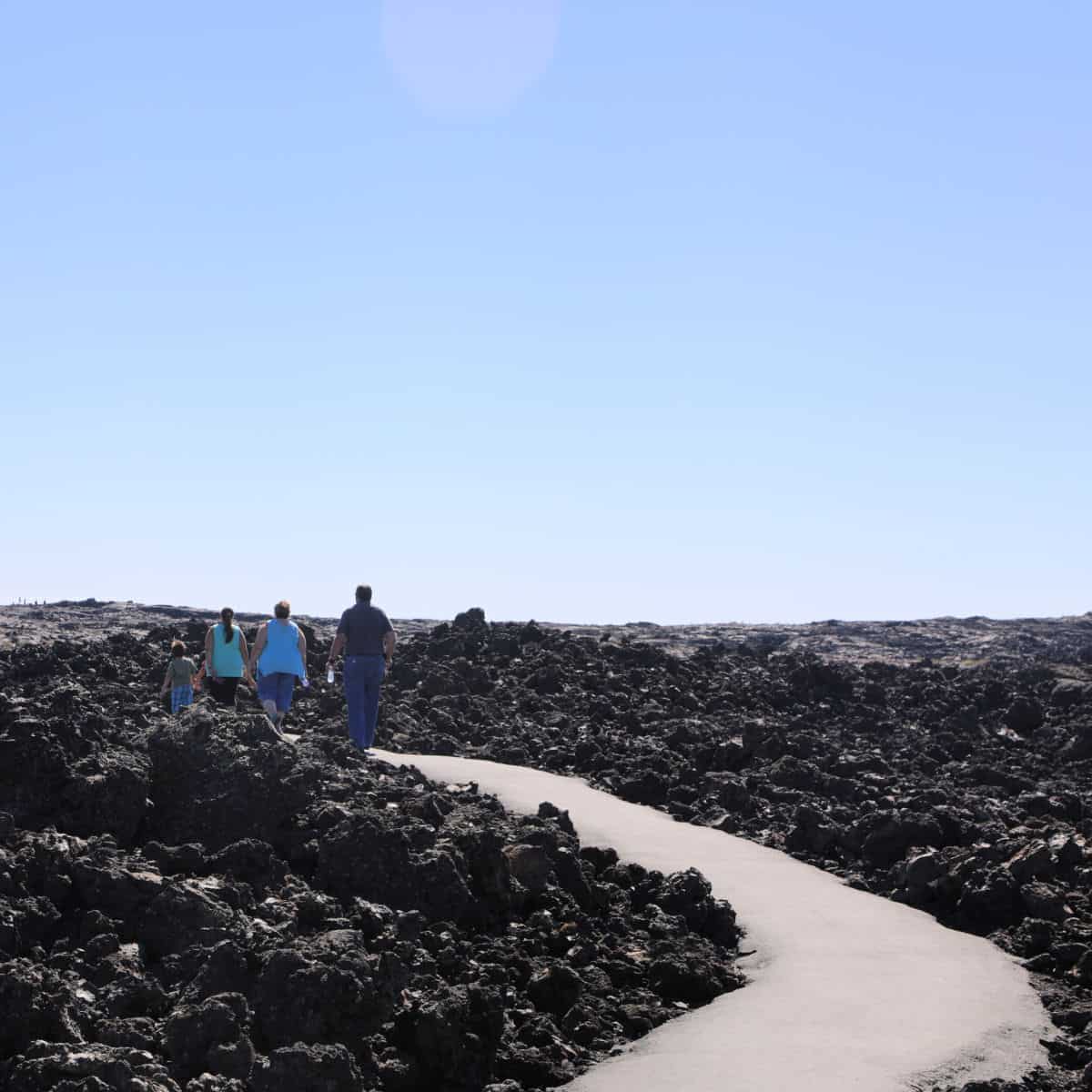
Inferno Cone Trail
While this trail is only 2/10 miles each way, the trail starts at about 6000 feet in elevation and climbs 164 feet at an average of a 14.9% grade.
This means that this short hike can still kick your butt, especially for those living near sea level.
The payoff is the spectacular view from the top of the Great Rift and cinder cones. On a clear day, you may be able to see The Teton Range, which is 100 miles away!
Spatter Cones Trail
274 feet one way with a typical grade of 11%.
The Spatter Cones trails are a nice short walk that gets you up close and personal with the park's mini-volcanoes!
Snow Cone Trail
247 Feet one way with a 6.9% typical grade.
North Crater Trail
1.8 miles one way
&58 feet elevation gain, 510 feet of elevation loss.
Typical grade of 13.4%
This trail takes you into the mouth of the North Crater!
Tree Molds Trail
1 mile to the first group of Tree Molds
108 feet of elevation gain
5.1% Typical grade
Hike to the edge of the Blue Dragon Flow, a place where molten lava charred tree trunks left impressions in the lava rock while other trees' lava encased other trees, which left vertical molds in lava!
Caves Trail
0.8 Miles each way
95 Feet elevation gain, 4.5% typical grade
Hike across a lava field to the "caves," which are really lava tubes that were created when the lava quit flowing and the lava emptied from the lava tubes.
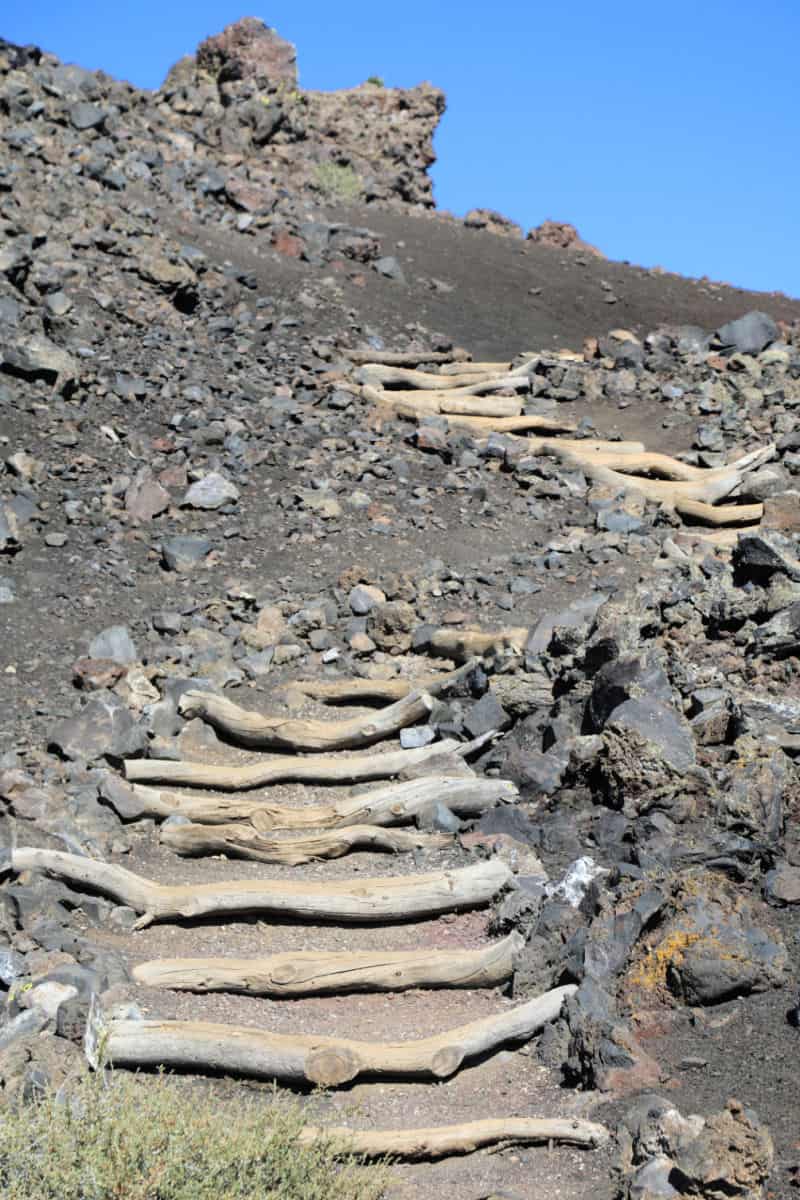
Explore a cave
At Craters of the Moon National Monument, there are five caves open to the public to explore.
Before entering any cave, you must first obtain a free Cave Permit and learn how to prevent White Noise Syndrome, which is affecting bats.
You will need to bring clothes and shoes that have not been worn in another cave.
Food is not permitted inside any of the caves. There is a garbage can at the trailhead for garbage and food scraps.
The Caves Trail is 1.6 miles in length and is considered a moderate hike.
The Caves Trail leads to four of the park's caves. A Cave guide can be picked up near the trailhead.
- Indian Tunnel: 800 ft long, stairs provided at entry, EASY
- Dew Drop Cave: Open, bouldered entrance, MODERATE
- Beauty Cave: Open, bouldered entrance, MODERATE
- Boy Scout Cave: Tight, rocky entrance, DIFFICULT
The park's fifth cave, which the public can access, is located on the Broken Top Loop Trail. This 1.8-mile hike is considered moderate. Make sure to pick up a cave guide at the trailhead so you know more about the Buffalo Cave.
-
- Buffalo Cave: Tight, rocky entrance, low ceilings, DIFFICULT
Always carry the 10 essentials for outdoor survival when exploring.
How to beat the crowds in Craters of the Moon National Monument?
- Visit during off-peak season: Most visitors come between May and September. To avoid the crowds, plan your visit during the off-peak season, like in late April or early October.
- Arrive early or late in the day: The busiest times at the monument are usually between 10 a.m. and 2 p.m. To avoid the peak hours, plan to visit early in the morning or late in the afternoon.
- Explore less popular trails: Instead of taking the heavily trafficked trails, try exploring some of the lesser-known areas of Craters of the Moon. This not only provides a more peaceful experience but also increases your chances of encountering unique wildlife and geologic features.
- Visit on weekdays: Weekends tend to be busier at national parks and monuments. If possible, plan your visit for a weekday when there are fewer visitors.
- Check for special events: Before your visit, check the monument's website for any special events or programs. These might attract larger crowds, so plan around them to avoid congestion.
Where to stay when visiting
There are no National Park Lodges within the park.
Nearby Lodging includes:
Koi Paradise - This is a lovely home with three bedrooms and two bathrooms. It has a gorgeous fenced backyard with a Koi pond where you can relax and watch the birds and fish. You can also entertain guests on the large deck and have a BBQ. Pets are welcome too! If you're feeling adventurous, you can go hiking or fishing in the beautiful Lost River Range. Or you can visit the Craters of the Moon!
Arco Inn - Arco Inn is a motel located in close proximity to Bottolfsen Park and Devil Boat, making it a convenient choice for travelers who want to explore the area. The motel offers free Wi-Fi in public areas, free self-parking, smoke-free premises, and secured bicycle storage. Guests can also enjoy the barbecue grills and bicycle parking. The guest reviews speak highly of the overall value and quiet location of the motel.
The 12 rooms at Arco Inn are comfortable and well-equipped with amenities such as air conditioning and Wi-Fi. Guests can enjoy the quiet and comfortable rooms at the property. The rooms also come with bathrooms with shower/tub combinations and shampoo, refrigerators, microwaves, and cable channels, which are extra conveniences that guests can take advantage of.
King Mountain Ranch - The King Mountain Ranch pioneer home provides a comfortable stay with several amenities such as two king beds, a queen bed, and two full beds, along with a pull-out hydabed. Visitors can also hook up to the electric RV and water supply. Tents are also allowed on the ranch. As the pioneer home is situated in the middle of the ranch, the guests appreciate the peace and tranquility it offers. The pioneer home dates back to the 1880s and has been constructed using hand-hewn logs. While the amenities have been upgraded, the rustic antique log cabin retains its historical charm, taking visitors back in time. Guests can enjoy staying in this historical location and experience the peacefulness and comfort that the pioneer home offers. Overall, it is an excellent choice for visitors looking for a serene and intimate getaway.
Click on the map below to see current vacation rentals and lodges near the park.
Camping
The Lava Flow Campground is the only developed campground in Crates of the Moon National Monument and Preserve. There are 42 campsites, and it is on a first-come, first-served basis.
There is one Group Camp spot that is available May 26 - September 30; this camping area is available for larger groups (maximum 30 people). The group campground is located .75 miles up a gravel road on the north side of U.S. Highway 20/26/93
This gated area is available by reservation only. Tent camping is allowed only, no RVs. You must check in at the visitor center during business hours to gain access to this gated area.
Camping is also permitted in the Craters of the Moon Wilderness, the NPS Preserve, and the BLM Monument for those properly outfitted. Fewer than 100 campers do this each year, so this is an opportunity to experience something truly unique! Make sure to read more on the backpacking page on the Craters of the Moon Page.
Additional Craters of the Moon Information
Things To Do Craters of the Moon - Likst of the park's most popular activities
Lava Flow Campground - Craters of the moon's only front country campground.
National Park Sites near Craters of the Moon National Monument
Grand Teton National Park - Your complete guide to exploring Grand Teton National Park, including camping, lodging, points of interest, hiking, wildlife viewing, and more!
Yellowstone National Park—This is your complete guide to exploring Yellowstone National Park, including camping, lodging, points of interest, hiking, wildlife viewing, and more!
Great Basin National Park - This is your complete guide to exploring Great Basin National Park, including camping, lodging, points of interest, hiking, wildlife viewing, and more!
Minidoka National Historic Site - Complete guide to Minidoka National Historic Site, where over 120,000 Japanese Americans were removed from their homes and incarcerated only based on their ancestry and no due process of law!
Hagerman Fossil Beds National Monument - Come discover what this area once looked like during the Pliocene, including mastodons and saber-toothed cats!
City of Rocks National Reserve - Emigrants of the California Trail described the rocks here "A city of tall spires" and "Steeple Rocks.) Today, rock climbers call this world-class destination home to over 600 climbing routes, with climbs varying from 300-600 feet and ratings from relatively easy to extremely difficult.
Golden Spike National Historic Site—This site marks one of the biggest achievements in the US in the 19th Century. It is where the last spike was placed for the first transcontinental railroad across the United States. This guide will help you plan your visit and learn about this incredible event.
Fossil Butte National Monument - Plan a visit to explore an area where some of the world's best-preserved fossils are found!
Check out all of the great Idaho National Parks, along with neighboring Washington National Parks, Montana National Parks, and Utah National Parks.
Make sure to follow Park Ranger John on Facebook, Instagram, Pinterest, and TikTok

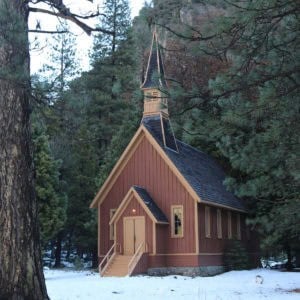
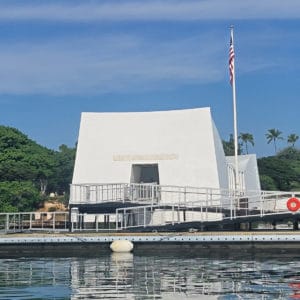


Leave a Reply